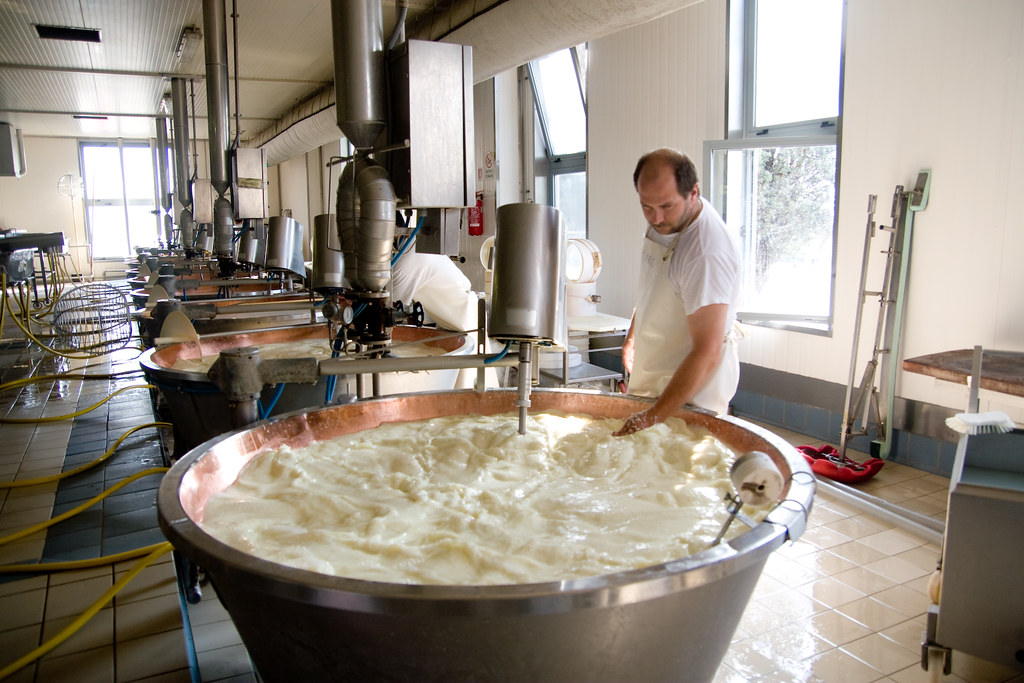Behind the Scenes with Cheese Makers Melbourne: Including Floridia Cheese
Behind the Scenes with Cheese Makers Melbourne: Including Floridia Cheese
Blog Article
Opening the Secrets of Artisanal Cheese Making: A Detailed Do It Yourself Guide
In the world of culinary workmanship, artisanal cheese making stands as a testimony to the delicate balance in between practice and development. Each action in the procedure, from selecting the right milk to refining aging methods, holds within it a wide range of knowledge passed down via generations. As we embark on this trip to debunk the art of creating charming cheeses, we are encountered with a tapestry of skills and secrets waiting to be untangled. Join us as we explore the ins and outs of this old craft, where art, perseverance, and science assemble to create tastes that entice the senses.
Selecting the Right Milk
When embarking on the journey of artisanal cheese making, the option of milk plays an essential role in identifying the quality and features of the end product. The sort of milk chosen influences the taste, structure, and in general profile of the cheese. Raw milk, straight from the pet, is liked by lots of artisanal cheesemakers because of its distinct mix of enzymes, germs, and flavor substances. Making use of raw milk comes with policies and threats, making pasteurized milk a more secure option for novices.
Furthermore, the resource of the milk, whether from cows, goats, lamb, or buffalo, contributes unique tastes and qualities to the cheese. Each kind of milk brings its very own subtleties, allowing for a broad variety of cheese ranges to be crafted based on the picked milk.
Culturing and Coagulating
To initiate the cheese-making process, the critical actions of culturing and coagulating must be carefully performed to transform milk into curds and whey. Culturing includes introducing helpful germs to the milk, which then starts the fermentation procedure. These microorganisms transform lactose (milk sugar) right into lactic acid, producing the acidic environment needed for coagulation. The kind of society utilized can substantially affect the taste, texture, and ripening of the final cheese item.

The timing and temperature control throughout culturing and coagulation are vital variables that affect the last outcome of celebrity. Appropriate execution of these actions is vital to make sure the preferred appearance, flavor, and uniformity of the artisanal cheese being created.
Draining Pipes and Pressing Curds
After the milk proteins have coagulated and the curds have actually been reduced to launch whey, the following vital step in artisanal cheese making entails draining and pushing the curds to achieve the preferred appearance and uniformity of the final cheese product. Draining pipes is the process of dividing the curds from the whey. This can be done by moving the curds into a cheesecloth-lined bowl-shaped sieve or mold and enabling the whey to drain pipes off naturally. The moment for draining can vary relying on the kind of cheese being made and the preferred dampness content.
Pushing helps get rid of any kind of remaining whey and compacts the curds to form a solid cheese wheel. Proper draining and pushing are essential steps that significantly impact the top quality and characteristics of the artisanal cheese being generated.
Aging and Flavor Strategies
Applying precise aging and flavor techniques is crucial in improving the deepness and complexity of artisanal cheeses, raising their preference profiles to exquisite levels of improvement and sophistication. Aging plays a critical function in creating the one-of-a-kind tastes and textures that differentiate artisanal cheeses.
Seasoning techniques likewise add significantly to the final preference of artisanal cheeses. Cheesemakers might choose to introduce added tastes by incorporating components such as natural herbs, seasonings, or also fruits into celebrity throughout the manufacturing procedure. Additionally, some cheeses are washed or scrubed with numerous fluids, such as salt Check Out Your URL water or alcohol, to enhance their flavors and structures.
Covering and Saving Cheeses

Final Thought
To conclude, grasping the art of artisanal cheese making entails very carefully selecting the ideal milk, following accurate culturing and coagulating procedures, draining and pressing curds properly, and utilizing numerous aging and flavor techniques. By adhering to these actions vigilantly and with focus to detail, you can create your own scrumptious and special cheeses in your home. Keep in mind to cover and store your cheeses appropriately to ensure optimal flavor and appearance growth. Happy cheese making!
Each kind of milk brings its very own subtleties, enabling for a large array of cheese selections to be crafted based on the picked milk.After the milk healthy proteins have actually coagulated and the curds have actually been cut my link to release whey, the next important step in artisanal cheese making includes draining and pressing the curds to achieve the desired appearance and uniformity of the last cheese product. Many cheeses need to be wrapped in wax paper or cheese paper to permit them to take a breath while securing them from drying out. these details For cheeses that require to continue aging, such as bloomy rinds or cleaned peels, guarantee they are kept in an amazing setting like a cheese cave or a refrigerator established to the appropriate temperature. By paying interest to the covering and storage space of artisanal cheeses, cheese manufacturers and enthusiasts can preserve the integrity of these delicacies and completely appreciate their complex tastes.
Report this page